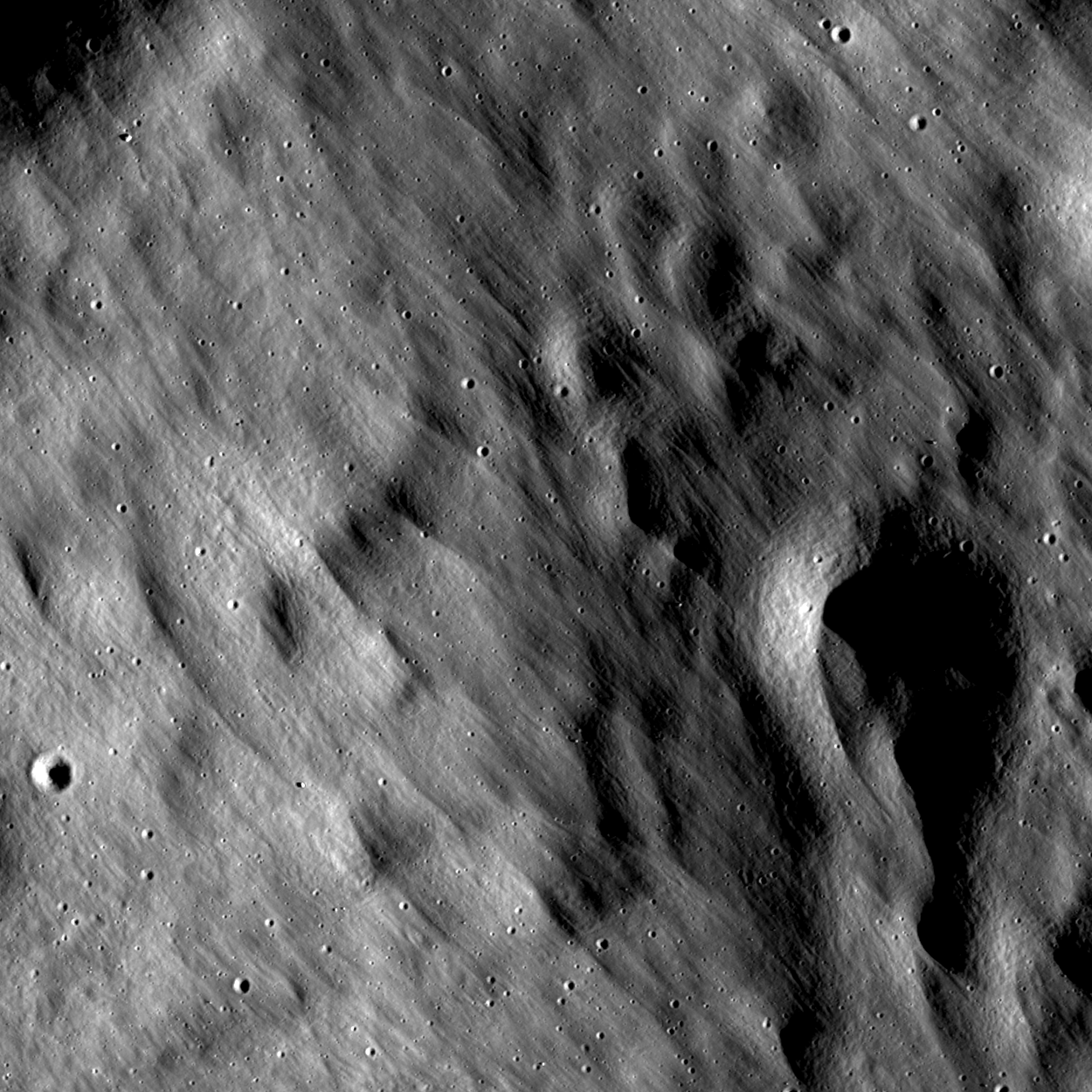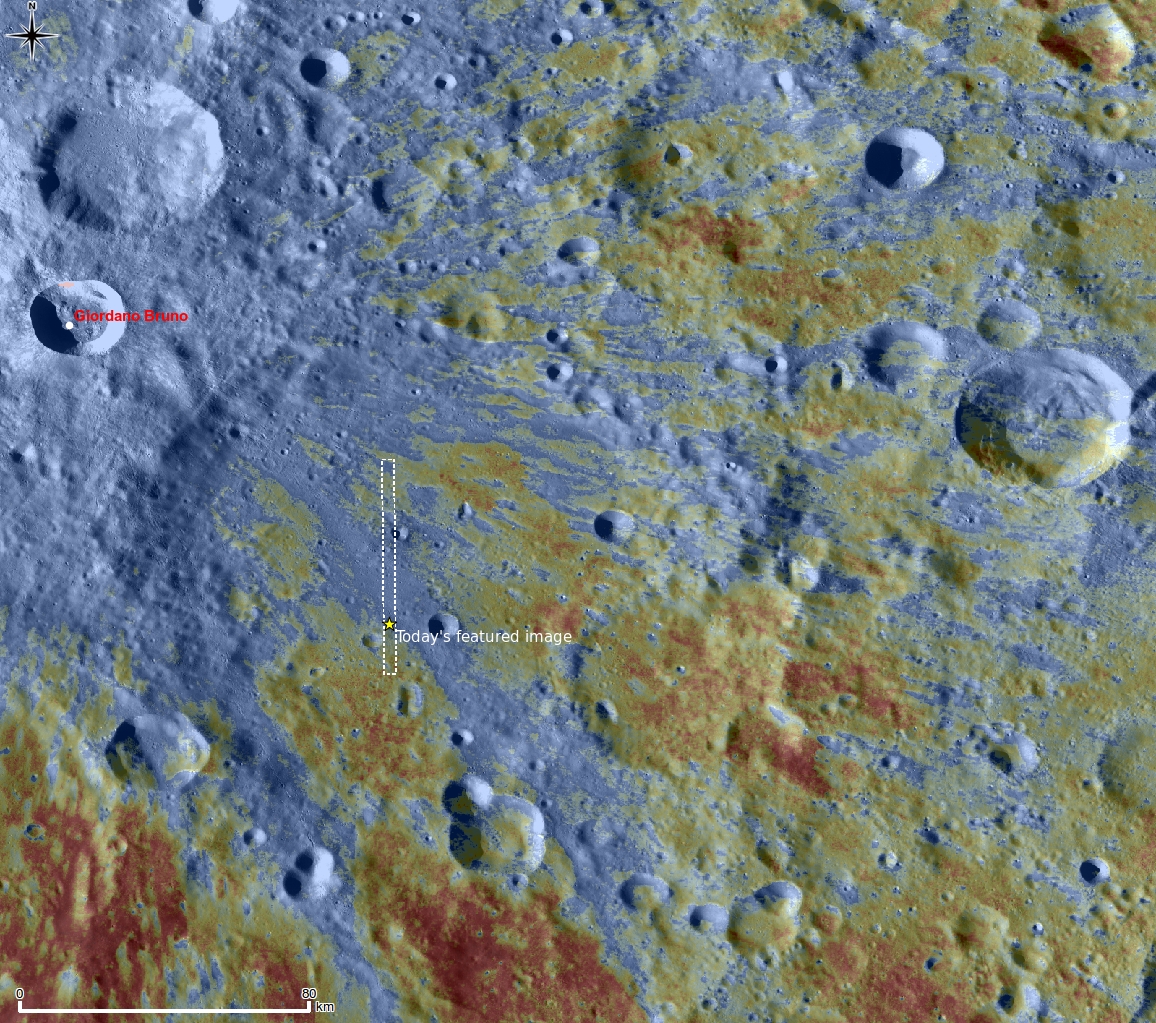
Impact cratering is a common and universal phenomena on every planet and satellite. However, we still do not completely understand this complicated process. The Moon is one of the best libraries of impact craters in our Solar System because its surface is not modified by atmospheric weathering or water erosion. The dominant form of erosion on the Moon is indeed impact cratering.
Today's featured image shows the edge of the Giordano Bruno crater ejecta (102.91°E, 35.94°N); upper-left of the WAC image (below). Here you can easily see the delicate patterns of ejecta overlying pre-existing terrain. The ejecta pattern points back to the crater, and gives the impression of a fast moving surface flow. Combining the morphology of the ejecta, and new topographic data from NAC stereo pairs, scientists will be better equipped to unravel the physics of ejecta emplacement.
Explore the Giordano Bruno ejecta blanket NAC frame!
Reference: Lucey et al. (2000) JGR, v105, no E8, p20377-20386.
Previous post showing floor of Giordano Bruno crater.
Published by Hiroyuki Sato on 22 November 2010
